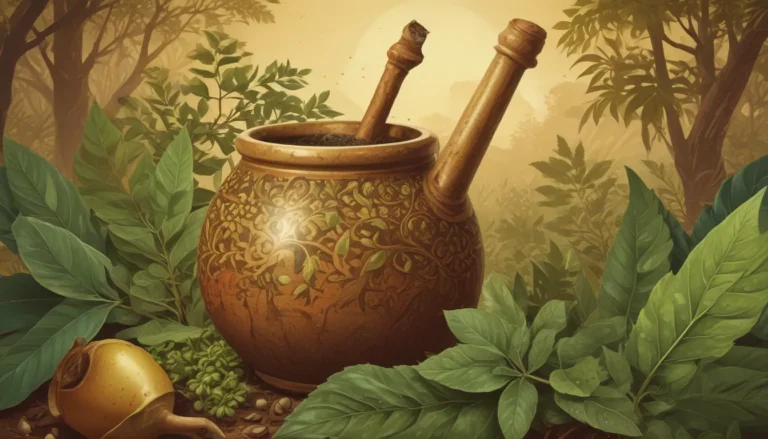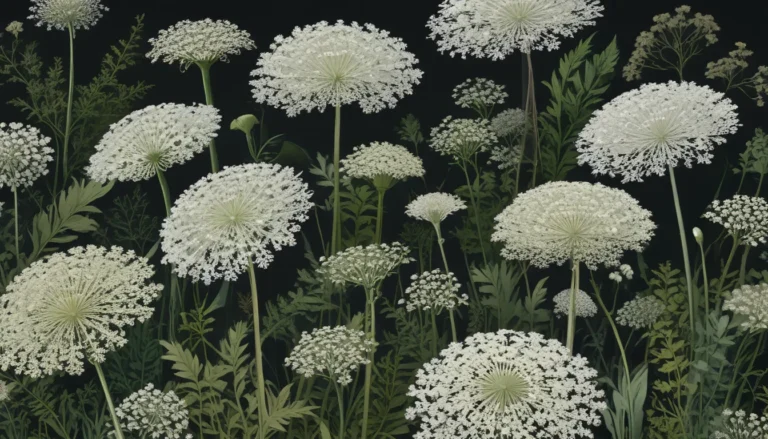The pictures we use in our articles might not show exactly what the words say. We choose these pictures to make you interested in reading more. The pictures work together with the words but don’t take their place. The words still tell you the important facts.
Welcome to the enchanting realm of Labrador tea, a plant with a rich history, diverse uses, and captivating qualities. Labrador tea, scientifically known as Rhododendron groenlandicum, is an evergreen shrub native to the northern regions of North America. Cherished by indigenous peoples for centuries, this plant has a long-standing tradition of medicinal and cultural significance. Join us on a journey as we uncover 18 intriguing facts about Labrador tea, exploring its unique characteristics, historical importance, and modern-day applications. From traditional medicine to culinary creations, Labrador tea continues to captivate botanists, herbalists, and nature enthusiasts alike.
The Unique Qualities of Labrador Tea
- Labrador tea, also known as wild rosemary, is a resilient plant with aromatic leaves and a rich history of traditional use by indigenous peoples for medicinal and cultural purposes.
- Contrary to its name, Labrador tea is not derived from the Camellia sinensis plant used to make traditional teas but belongs to the Rhododendron genus.
- Thriving in cold climates, Labrador tea is commonly found in subarctic and arctic regions, showcasing its resilience and value in challenging environments.
Aromatic Leaves and Cultural Heritage
- When crushed or steeped, the leaves of Labrador tea emit a pleasant aroma reminiscent of pine or rosemary, contributing to its use in herbal preparations and traditional remedies.
- Indigenous peoples, such as the Inuit and First Nations, have utilized Labrador tea in various ways, including as a medicinal herb, a flavoring agent, and in spiritual ceremonies.
- Labrador tea holds cultural significance for indigenous communities, playing a symbolic role in traditional practices and ceremonies.
Medicinal Properties and Potential Health Benefits
- Labrador tea contains compounds like flavonoids and terpenes that are believed to possess potential health benefits, sparking scientific interest in exploring its pharmacological properties.
- Historically used in traditional medicine to address respiratory issues and digestive discomfort, Labrador tea reflects its perceived therapeutic value and diverse applications.
- The leaves of Labrador tea can be steeped to create a soothing herbal infusion known for its unique flavor and wellness benefits.
Biodiversity and Resilience in Nature
- Labrador tea's ability to survive in challenging environments, tolerate cold temperatures, and thrive in acidic soils highlights its resilience and ecological importance.
- As an integral part of cold climate ecosystems, Labrador tea contributes to biodiversity, supporting various organisms within its habitat and enriching the natural environment.
- The diverse species of Labrador tea, each with its own characteristics and distribution, contribute to the plant's adaptability and genetic diversity.
Cultivation and Scientific Exploration
- Labrador tea has inspired creative culinary applications, with chefs and food enthusiasts incorporating its unique flavor profile into dishes and beverages.
- Scientific research on Labrador tea's chemical composition, therapeutic properties, and ecological roles contributes to a deeper understanding of its diverse attributes.
- It is important to respect the traditional knowledge and practices associated with Labrador tea, acknowledging its historical importance and the wisdom of indigenous communities.
Conclusion: Appreciating Labrador Tea’s Legacy
In conclusion, Labrador tea is a multifaceted plant with a rich tapestry of cultural, ecological, and scientific significance. Its historical importance, unique qualities, and potential health benefits make it a valuable addition to both natural landscapes and herbal medicine. As we continue to explore and appreciate Labrador tea, it is essential to approach its consumption and utilization with caution. Understanding the risks associated with certain compounds found in the plant is crucial for safe use. Labrador tea serves as a testament to the intricate relationship between humans and the plant kingdom, offering a blend of cultural significance, ecological value, and potential therapeutic properties.
FAQs:
Is Labrador tea safe to consume?
Labrador tea contains compounds that can be toxic in large quantities, so it should be consumed with caution. Seek guidance from a qualified herbalist or healthcare professional before using Labrador tea for medicinal purposes.
Can Labrador tea be grown at home?
Yes, Labrador tea can be cultivated at home, but it requires specific growing conditions, including acidic soil and ample moisture. Researching the plant's needs is essential before attempting to grow it in a home garden.
We are committed to providing trustworthy and engaging content that brings valuable insights and information to our readers. Our dedicated editors meticulously review each submission to ensure the highest standards of accuracy and reliability. Trust in our commitment to quality and authenticity as you explore and learn with us.






